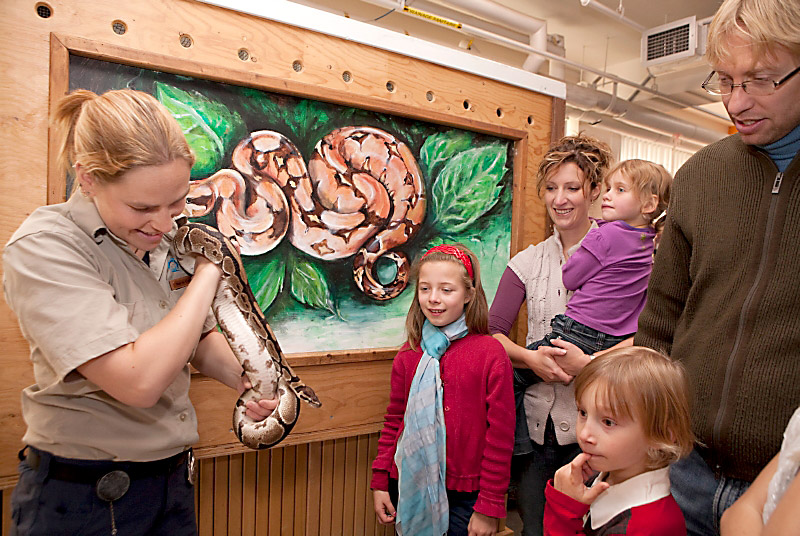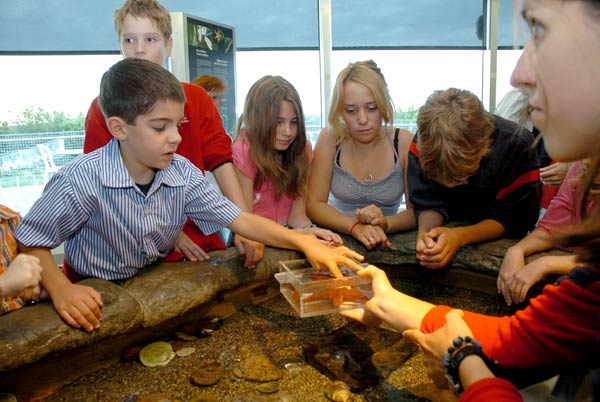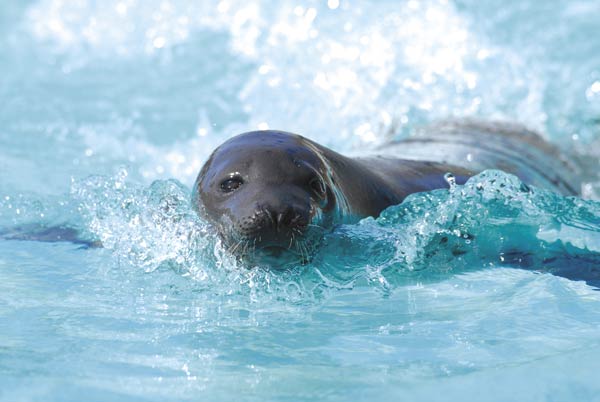

Country:  Canada
Canada
 Canada
Canada
Province:  Quebec
Quebec
 Quebec
Quebec
Founded: July 3, 1608
Population:
167,264 (1996)
509,955 (2001)
525,376 (2006)
Quebec City at a Glance
- Founded in 1608 by Samuel de Champlain
- Cradle of French civilization in North America
- Capital city of a province of 7.5 million people
- A UNESCO World Heritage Site since 1985
- Seat of the province’s National Assembly
- 9,000 km2 in area
- 250 km northeast of Montréal
- Population 632,000 (Greater Québec City Area)
- 99% of visitors are happy or very happy with the warm Québec welcome
Quebec City (Ville de Québec) is the capital of
the Canadian province of Quebec and is one of the oldest cities in Canada. Over
the course of its history, Quebec City has
served as a capital, a fortress, a seaport, a religious center, a city of
knowledge, and the cradle of French civilization in North
America. Known worldwide for its rich history and heritage, it is also a modern and
dynamic city. Its economic and cultural strength has fostered ties with major
cities around the world and promote partnerships
with other cities around the world, and its ties abroad help attract many international events.
World Heritage City
In December 1985, the United
Nations Educational, Scientific and Cultural Organization (UNESCO) added
the historic district of Old
Québec City
to its prestigious World Heritage List. Québec
City became the only city in North
America outside Mexico
to receive this honor.
UNESCO added Québec
City to the list in
recognition of its universal value and exceptional appeal. The historic
district of Old Québec City is the cradle of French civilization in North America and, through its architecture, shows
evidence of the role it has played as a capital city under French, British, and
Canadian rule.

An impregnable bastion for nearly three centuries, Québec City
has preserved the main components of its old defense system. Today, it is the
only city in North America surrounded by
authentic fortifications.
International Center
A remarkable cultural and geographic crossroads, Québec has a unique and
special role to play internationally. To promote and reap the benefits of Québec
City's know-how and the sectors in which it excels, municipal authorities
created the city's Commissariat aux relations internationales (CRI)
on March 1, 2003.
CRI is responsible for strengthening the key role international
relations play in the development of the city. It provides a link between
municipal authorities and the main socioeconomic partners and leaders in the
community in order to define the issues and to ensure the city’s progress in
matters of international relations and immigration.
Commissariat aux relations
internationales
2, rue des Jardins, bureau SS119
C. P. 700, Haute-Ville
(Québec) G1R 4S9
Canada
Phone : 418 641-6188
Fax : 418 641-6437
C. P. 700, Haute-Ville
(Québec) G1R 4S9
Canada
Phone : 418 641-6188
Fax : 418 641-6437
- - - - - - - - - - - - - - - - - - - - - - - - - - - - - - - - - - -
Quebec
City statistics [Statistics Canada]
Quebec City statistics [Ville de Québec]
Motto:
The motto “Don de Dieu feray valoir” [I shall put the gift of God to
good use] pays homage to the Christian faith, symbolizing the spiritual, moral,
and social values of Québec
City’s courageous and
industrious residents. It also represents the city’s hopes and dreams, which
are rooted in its very foundation.
- - - - - - - - - - - - - - - - - - - - - - - - - - - - - - - - - - -
Quebec
City and Area (Photos & Videos)
Quebec photos [Bonjourquebec]
Quebec video clips [Bonjourquebec]
Quebec City Photo Gallery [world66]
- - - - - - - - - - - - - - - - - - - - - - - - - - - - - - - - - - -
Attractions:
1- Château Frontenac
2- Quebec Fortifications
3- Quebec Citadel
4- Plains of Abraham
Battlefield Park
5- Museum of French America
6- Quebec National Museum of Fine Arts
7- Capital Observatory
8- Dufferin Terrace
9- Parc Aquarium du Québec
10- Pierre Laporte Bridge
Attractions:
Château Frontenac, currently known as Fairmont Le
Château Frontenac, a hotel, is Québec's most famous landmark. It was
built in the late 19th century and forms part of the walled historic center of
the city, which was designated a World Heritage Site in 1985.

The Château Frontenac was designed by American
architect Bruce Price, as one of a series of "château" style hotels
built for the Canadian Pacific Railway company (aka CPR) during the late 19th
and early 20th centuries. CPR's policy was to promote luxury tourism by
appealing to wealthy travelers. The Château Frontenac opened in 1893, six years
after the Banff Springs Hotel in Alberta, which was owned
by the same company and similar in style.
02- Quebec Fortifications (Fortifications de Québec)
One
of the city's most unique features is the 4.6km
(2.9-mile) rampart encircling the Old Town, making it the only walled
city in North America. It is possible to walk along the top of
the fortifications, which offer sweeping views of the city and the St
Lawrence River.

03- Quebec Citadel (La Citadelle de Québec)
The Citadel, dating from 1820, is one of Quebec City's most
distinctive features and a legacy of the British occupation. On the heights of
Cap Diamant, the star-shaped fortress was built to withstand a repeat attack on
the city from across the Plains of Abraham to
the southwest.

The site of many clashes for supremacy
between the French and British Empires, the park is the scene of the 1759
Conquest, which changed the fate of North America.
Apart from its historical past, the park is to Québec what Central Park and
Hyde Park are to New York and London: a city park of outstanding value, the
lungs of the city. One hundred and three hectares of meadow and grassy knolls,
decked with flowers or covered with snow, are there for residents and visitors
to enjoy.


05- Museum of French America (Musée de l'Amérique Française)
The Musée de l'Amérique francaise, the oldest museum in
Canada,
has its roots in European religious and educational traditions.
Its first collection of scientific instruments intended
for educational purposes dates back to 1806. Through the years, numerous
collections were assembled, such as ancient coins and medals, mineralogy,
geology, numismatic, zoology, and botanical collections, as well as fossils,
paintings, ethnology and ancient books. Today, these unique witnesses to the
past are part of a collection entrusted to the Musée de la civilisation, of
which the Musée de l'Amérique francaise has been a component since 1995.
06- Quebec National Museum of Fine Arts (Musée National des Beaux-Arts du
Québec)
The most important collection of paintings
and sculpture by Québécois artists is held by the Musée National des Beaux-Arts
du Québec. A selection of works are displayed related to three main periods -
the beginnings of Québécois art (largely influenced by religion), the
European-influenced modernist period up to 1945, and the period of figurative
and abstract art from the mid-20th century onward.
07- Capital Observatory (Observatoire de la Capitale)
The best view of the city is from the
Capital Observatory, the 31st floor of the Marie-Guyart. The large glass walls
of the Observatoire de la Capitale offers spectacular views of Quebec, its majestic
river and mountains, close to Old Quebec.

The Observatory in figures:
- The Observatoire de la Capitale is located in the Marie-Guyart, to 221 meters of sea level
- The building has a total height of 132 meters, the ground floor to the roof and is the highest summit in Quebec
- The Observatoire de la Capitale is located at 31st and last stage
- Area of the Observatoire de la Capitale: 570 square meters on four sides
- A panoramic view of 360 °
- The speed of the elevators is 25 feet per second
- Duration of the rise in lift: 28 seconds
- Built in the Marie-Guyart: 1972
- Opening year of the Observatoire de la Capitale: 1998
- Attendance since the opening, over 900 000 people
- Annual attendance: about 70 000 people
08- Dufferin
Terrace (Terrasse Dufferin)
In Old
City Quebec, just
below the Chateau Frontenac, you will find a lovely area known as Terrasse
Dufferin. Terrasse Dufferin is a beautiful terrace along the St.
Lawrence River in Qebec, built in 1879 under the direction of Lord
Dufferin. The walkway extends for a long way down the St. Lawrence River, and
if you care to extend your walk, there is also a walkway into the Plains of Abraham.

There are many interesting sights to take in as you stroll down the terrace
even outside of the stunning views of the city and the river. one of these
sights are the cannons spread along the walkway. Several of these cannons were
originally the property of the Russian government, but were captured by the
British during the Crimean War. Also along the walkway you can find the
original fortifications from the Upper
City displayed, creating an
interesting view of the history of Quebec.
During the pretty summer months, you can
often find entertainers and artists along the terrace, creating a fun and
relaxed atmosphere. For several weeks in July and August, the Terrasse Dufferin
also becomes the location for a large book fair known as Les Bouquinistes du
Saint-Laurent. At many times throughout the year, the Terrasse Dufferin becomes
a gathering place for much of Quebec
for various festivals. From Terrasse Dufferin, you can also reach a funicular
to take you to locations in Lower
City such as
Petit-Champlain and Place Royal. Overall, the Terrasse Dufferin offers a free
way to explore both the panoramic beauty and the rich history of Old Quebec.
Visitors can see walruses, seals, polar
bears and other animals from northern maritime regions in an open-air
environment, as well as tropical fish and other delicate creatures indoors. The
aquarium is divided into seven sectors, focusing on regions such as the banks
of the St Lawrence and the North Pacific.




10- Pont Pierre-Laporte (Pierre Laporte Bridge)
Completed in 1970, Pont Pierre-Laporte is Canada's
longest suspension bridge. The bridge is used by over 90,000 vehicles daily. It
crosses the Saint Lawrence River approximately 200 metres (660 ft) west of
the famous Quebec Bridge between historic
Quebec City and Lévis.


I will add more topics here in my earliest available
time
Transportation
Geography
Economy
Climate
and
...
Bibliography:
ville.quebec.qc.ca
quebeccity.worldweb.com
quebecregion.com
world66.com
www.bonjourquebec.com
thetravelzine.com
controlledreleasesociety.org
britannica.com
geography.about.com
travel.yahoo.com
en.wikipedia.org
wikitravel.org
worldtravelguide.net
phototravelpages.com
gonomad.com




Your blog is interesting and I am pleased to read about the Quebec attractions in your article. After reading your blog I am keen to explore the Plains of Abraham Battlefield Park after enjoying nyc to niagara falls bus tour.
ReplyDelete